Last Updated: 01/07/2025
Cat Peeing Outside the Litter Tray? Common Causes & Tips
Struggling with your cat having accidents in the house? This frustrating issue can be caused by various medical or behavioural reasons. Our guide helps you understand why your cat is urinating inappropriately and provides effective, actionable tips to stop the behaviour for good.
Author: Dr Teagan Lever BVSc (Hons)
Reading Time: 33 minutes - long read
Does your kitty sometimes toilet outside of their litter tray? It's a scenario that plays out in homes across the world, causing immense frustration and concern for even the most dedicated cat owners. You've provided a pristine, freshly cleaned litter tray, yet you discover your beloved companion has chosen to toilet somewhere else entirely - on the carpet, against the furniture, or in a hidden corner of the house.
This behaviour, often referred to as inappropriate toileting or periuria, is more than just a simple act of defiance; it's one of the most challenging and disheartening behavioural issues a cat owner can face. It can strain the human-animal bond and leave you feeling helpless. However, it's crucial to understand that your cat isn't doing this out of spite or to deliberately misbehave. In almost every case, this is a sign that something is wrong in their world.
Determining the root cause of this behaviour is the most critical step in addressing it. Only by understanding the "why" can you effectively implement the right solutions to resolve the issue and restore harmony to your home.
In reality, a multitude of factors can lead a cat to start toileting outside their designated box, ranging from underlying medical conditions to environmental stressors. To help you navigate this complex issue, we've compiled a comprehensive list of the most common reasons behind this behaviour below.
1. They may be unwell
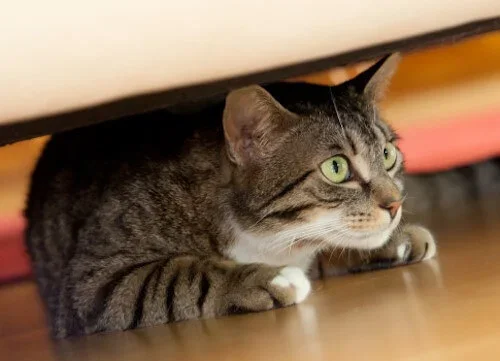
he first and most important thing to note is that toileting outside of the litter tray can be a sign of urinary disease. There are other medical conditions that may cause litter box avoidance, but urinary diesease is by far the most common. Always get your cat checked over by a vet if they are toileting outside their litter tray.
Medical conditions that can cause litter box avoidance:
- Feline Lower Urinary Tract Disease
- Stress and Anxiety
- Kidney disease*
- Thyroid disease*
- Diabetes mellitus*
- Age-related diseases such as joint disease or dementia
- Gastrointestinal disease
* condition may cause litter box avoidance as a secondary occurrence due to increased thirst and urination.
Signs that indicate and urgent need for a vet visit include straining to urinate, agitation or vocalisation when trying to urinate, blood in the urine, or inability to pass urine.
The effect of spaying or neutering on inappropriate toileting
Also keep in mind that desexing (spaying or neutering) your pet can have a positive impact on inappropriate toileting. This is particularly noticeable if your pet is spraying or urinating due to reproductive or territorial reasons.
For more information about urinary illness and how to prevent it, see our article Feline Lower Urinary Tract Disease Fact Sheet.
2. Your cleaning standards might not be up to scratch

Cleanliness is absolutely essential for maintaining litter box usage. Cats are extremely clean creatures, and some are more fussy than others - many cats won't use litter once it's been used even once, and require a perfectly clean litter box every time.
You might think you've done an acceptable job at cleaning up after your cat, but your cat may disagree. If cleaning the litter tray regularly isn't your favourite pastime, you might like to take a look at a self-cleaning robotic litter tray, which cleans the litter tray straight after use.
3. Your cat may not like the type of litter
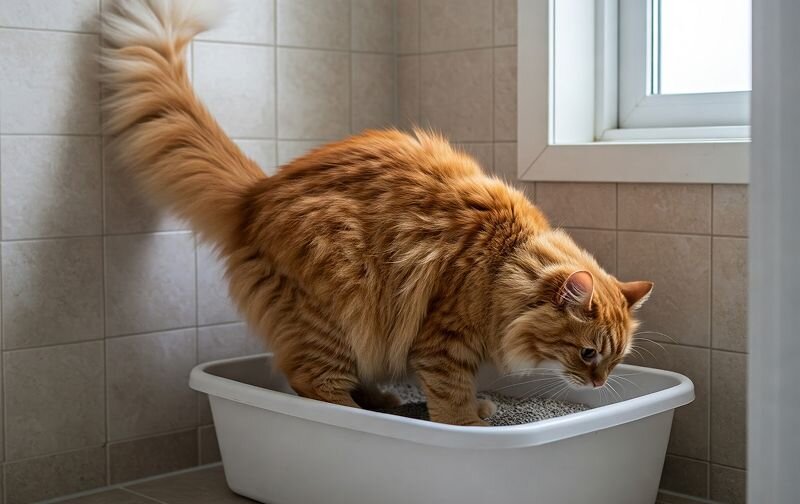
Many cats will have a preference for one type of cat litter. If you have just adopted your cat, or if your cat previously had access to the outdoors, they may have a type of material they prefer to toilet in.
What type of litter do cats like? Every cat is different and may prefer a different type of litter. Sometimes, a little bit of 'trial and error' may be required to determine what your cat likes. Different types of litter include:
- Clay
- Corn
- Crystals
- Paper pellets
- Tofu
- Other plant material
To find what your cat likes, it can help to temporarily provide a 'smorgasbord' of litter types to see what they like. For example, you might like to provide one corn-based litter, one natural litter, one clay-based litter, and one crystal litter, to tempt your kitty and find out which one they gravitate towards.
Tips for transitioning your cat onto a different litter
- Take it slow. Cats are creatures of habit and sudden changes can be stressful for them. It's important to give your kitty time to adjust to the new litter.
- Mix the old and new litter. Start by adding a small amount of the new litter to the old litter and gradually increase the amount over time.
- Provide a second litter box. This will give your cat the option to choose which litter they prefer.
- Clean the litter box daily. Make sure to scoop the litter box daily and clean it thoroughly once a week. This will help keep your cat comfortable and encourage them to use the litter box.
- Observe your cat's behaviour. If your cat seems to be avoiding the litter box or having accidents outside the box, it may be a sign that they are not comfortable with the new litter. In that case, you may need to switch back to the old litter or try a different type of new litter.
Learn about the different types of cat litter and read our complete comparison here: Complete Guide to Cat Litter.
4. They may dislike the type of litter box
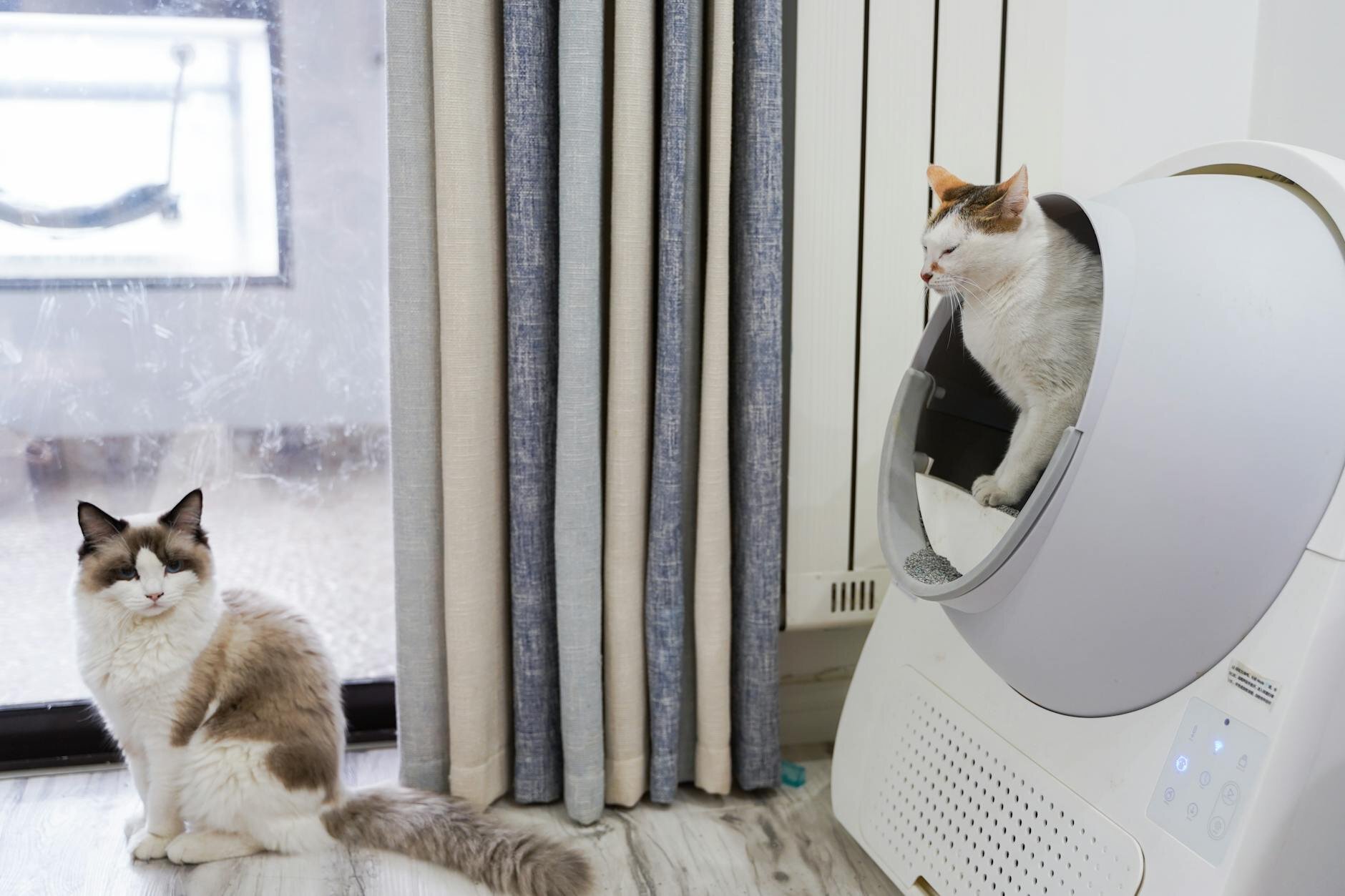
It is also important to question whether your cat dislikes the type of litter box you've chosen for them.
What types of litter boxes do cats like? Every cat is different and may prefer a different litter box. Sometimes, a little bit of 'trial and error' may be required to determine what your cat likes. Different types of litter boxes include:
- Covered litter boxes
- Open trays
- Self-cleaning litter trays (covered or uncovered)
Covered litter boxes are may contain a cat flap entrance, which may frighten or frustrate some cats. To test if this is an issue for your cat, try using a plain open litter tray and see if your cat's toileting behaviour improves.
Location and accessibility of litter boxes
In addition to the type of litter box available, keep in mind that your cat may not like the location of the litter box. Cats have a desire for privacy and easy access - so areas that get high traffic, are noisy, or are difficult to access are less appealing.
5. There may not be enough litter boxes
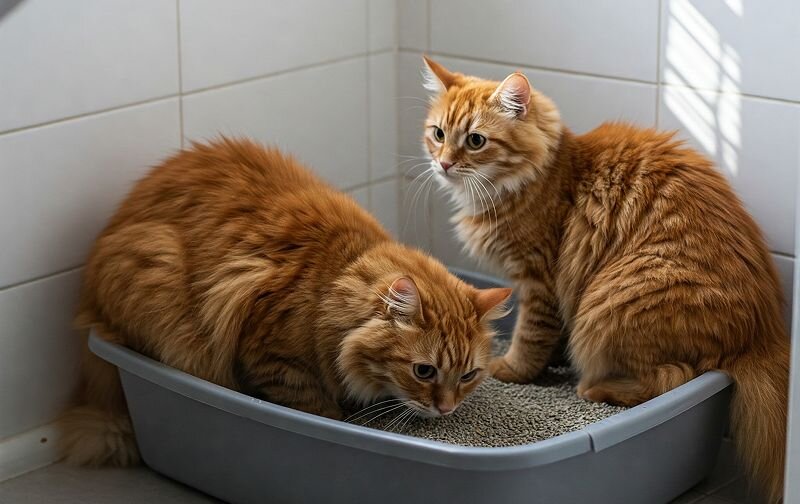
Another reason why cats might toilet outside their litter tray is if there simply aren't enough litter trays around the house. This is a particular challenge in multi-cat households, as cats are solitary creatures by nature and do not like to share resources like litter trays.
How many litter trays do you need?
A good rule of thumb for how many litter trays you should provide is to always have one more litter tray than the amount of cats you own. This means:
- For 1 cat, you should provide 2 litter trays
- For 2 cats, you should provide 3 litter trays
- For 3 cats, you should provide 4 litter trays etc.
6. They may be stressed
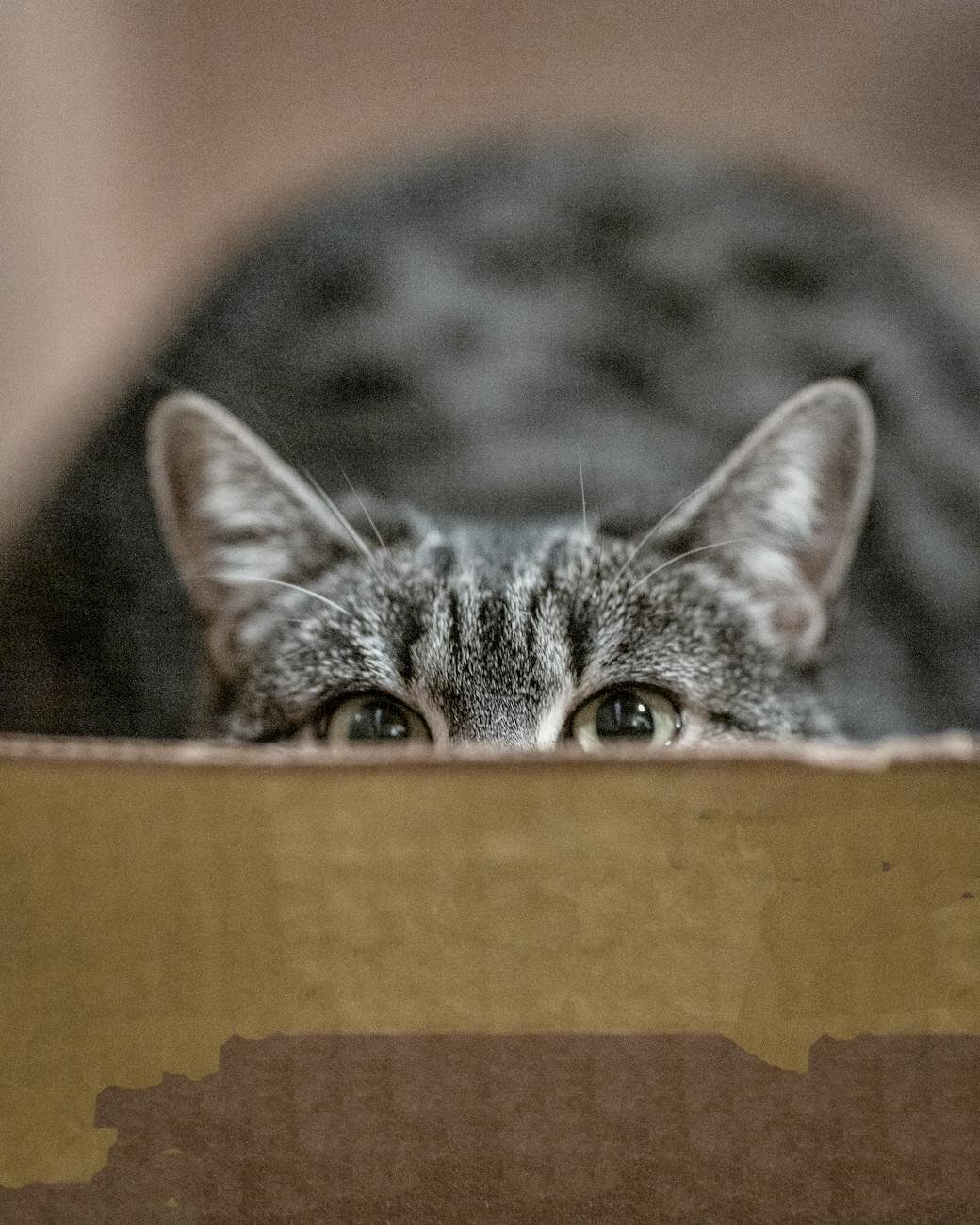
Stress in cats often results directly in urinary issues. This is in part due to cats being very prone to stress, and partly due to the sensitivity of their bladder wall.
What environmental and behavioural factors contribute to stress?
Almost anything can cause significant stress in a cat - a visitor to the house, a new cat in the neighborhood, a vet visit, or even a change in furniture at home. Any of these environmental changes can all contribute to stress in cats, which has a direct impact on litter box habits.
Strategies to reduce stress in cats
1. Feliway. One product that can help reduce stress in cats is Feliway, a pheromone dispenser available as a diffuser or as a spray.
2. Regular playtime Some cats respond well to a increasing their daily playtime, which acts as an effective form of exercise. Feather teaser toys are particularly great as it can encourage cardio exercise, which increases endorphins and improves their mental state.
3. Catnip may also help soothe some kitties. This natural herb is believed to affect around 20-30% of cats and is perfectly safe. Catnip is available in various forms including catnip spray, catnip treats and catnip toys.
4. Provide levels and hiding spaces. This is particularly important if the cause of your cat's anxiety is children or other pets. Try to provide different levels, as cats feel safest when they are up high and can survey their surroundings. Providing cat trees and scractchers is an easy way to achieve this.
For more info on Stress and Anxiety in cats, check out our article How to Reduce Anxiety in Cats.
Implementing Behavioural Modification and Training
Training your cat to toilet in appropriate areas can be challenging, but confinement and supervision training can be helpful in some cases. Begin by establishing a regular routine of feeding and play sessions, and keep a diary of when and where your cat eliminates. Try to keep your cat confined to the toileting area at the times of day in which they usually toilet, and then reward them with a treat when they use the litter box correctly.
Deterrents and attractants can also be useful. For an 'attractant', most people prefer to use catnip sprayed on the litter box to encourage their cat to use the litter tray. A spray such as Gigwi Catnip Spray can be useful. For a deterrent to keep your cat away from places they toilet inappropriately, many people find that laying down aluminium foil or bubble wrap is particularly effective.
Ultimately, a cat toileting outside their tray is sending you a clear message that something in their world isn't right. Whether the root cause is medical, environmental, or stress-related, your path forward begins with a consultation with your vet.
Once health concerns are managed, small changes to their litter setup and environment can make a world of difference. Be patient, be observant, and remember that every step you take to understand their needs strengthens your bond. With the right approach, you can successfully guide your feline friend back to the litter box and put this frustrating issue behind you.
History
Our experts continually monitor the health and wellness space and we update our articles when new information becomes available.
Thu Jun 26 2025
Edited by Dr Gillian Hill BVSc (Hons)Dr Teagan Lever BVSc (Hons)
Head Veterinarian, BVSc (Hons)
Pet Circle's Head Veterinarian, Dr Teagan graduated from the University of Queensland in 2010 and went on to work in small animal and mixed practice in various locations around QLD & ACT before joining Pet Circle in early 2016. Dr Teagan has special interests in dermatology, nutrition and preventative health care. She feels privileged to witness the special bond people share with their pets on a daily basis and enjoys forming lasting relationships with pet parents and their fur children.

